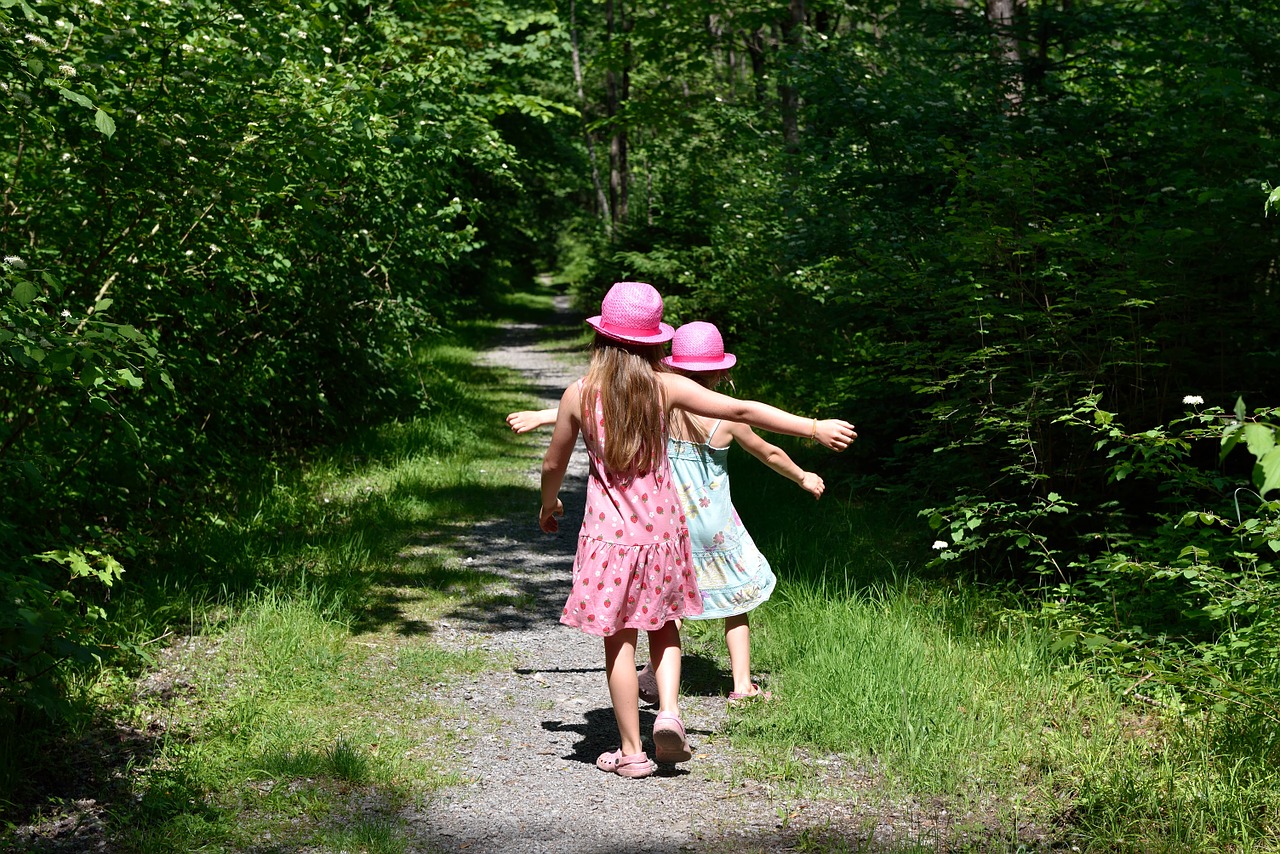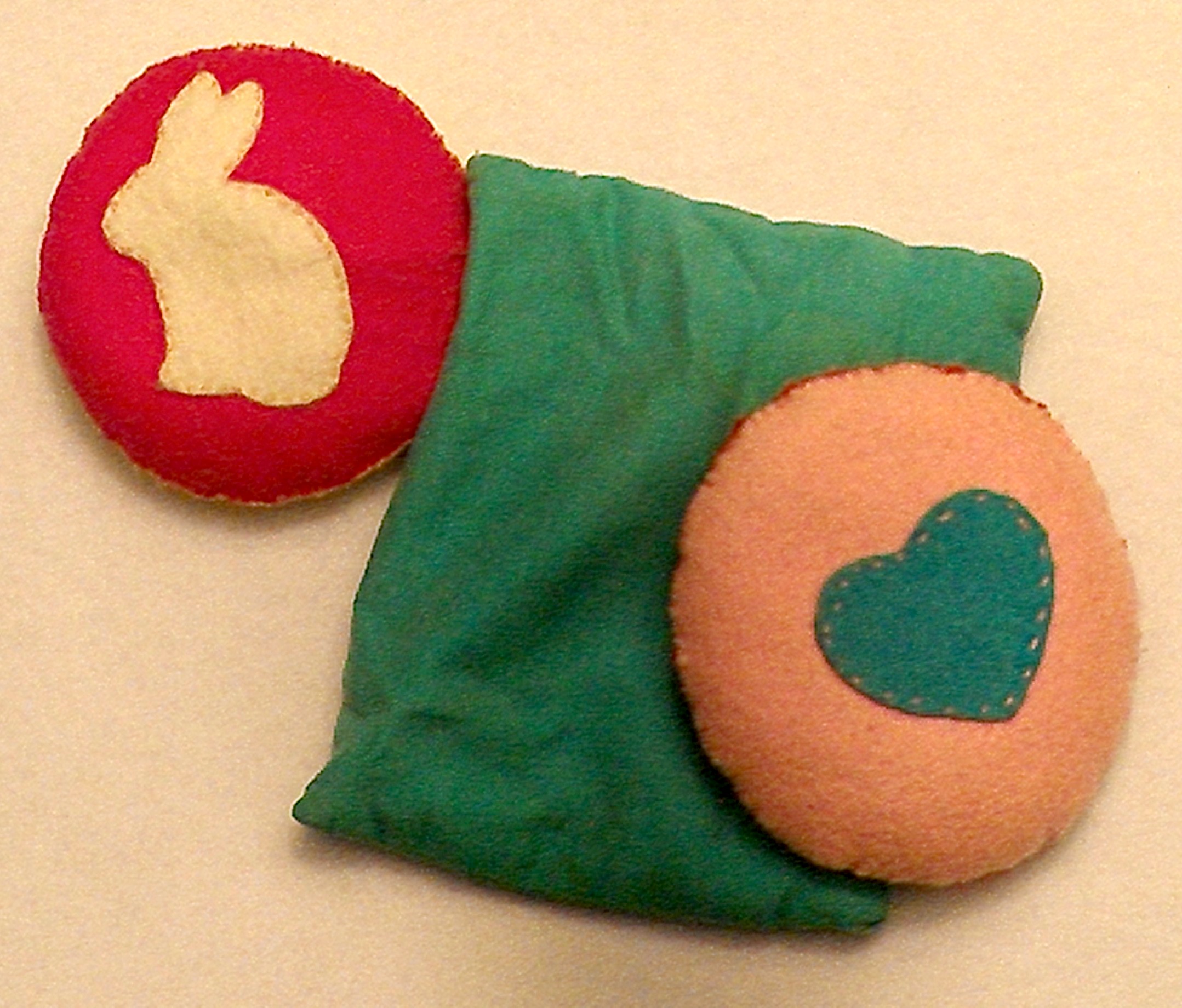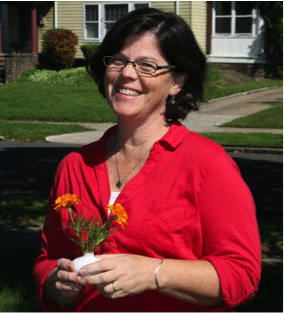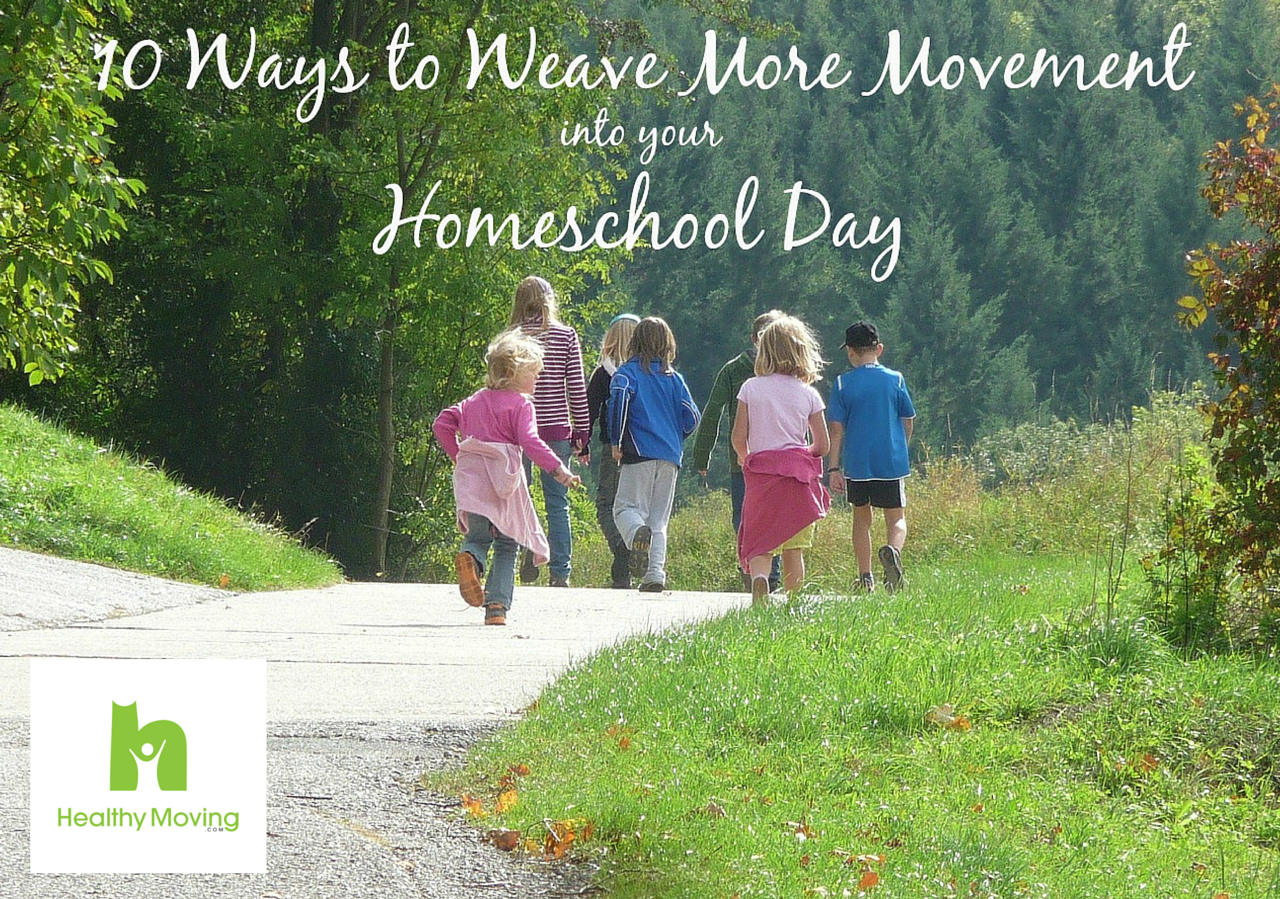10 Ways to Weave More Movement into your Homeschool Day
One of the many hats I wear is that of home educator. I love how the Waldorf-inspired curriculum that we use incorporates lots of movement. To help encourage you to weave more movement into your homeschool day, I am thrilled to welcome one of my homeschooling mentors, Jean Miller, founder of Waldorf-Inspired Learning. Jean is the mother of three and a long-time homeschooler (over 20 years). She has spent years working on weaving more movement into her homeschool. She is still on this mission, even with a teenager in the house! In this post, you’ll find both inspiration and ideas that Jean has collected over the years.
And, if you’d like to learn a fresh approach to Physical Education for Homeschoolers, I’d love to have you join me for a free class! I’ll be sharing four things you should teach your kids to promote lifelong health and wellness. Register for the class here.
“Movement games give us a sense of freedom and a sense of direction. Movement is the origin of our sense of purpose.”
– Kim Brooking-Payne
Games Children Play
Children in all cultures have for centuries invented games. Children have played in the dirt, in the village green; wherever children have gathered, they have made up and played games. And whole body games always involve movement (think large muscle movement).
Today, in our modern culture, we find ourselves having to teach our children how to play games because these spontaneous gatherings don’t happen so much in our children’s lives.
Many children today also have sensory integration issues which can lead to difficulty imitating behavior and thus to learning challenges.
The antidote? Lots and lots of movement and play both indoors and outdoors – playing in the mud, climbing trees, gross motor movement, games, clapping rhymes, jump rope and more.
Rudolf Steiner, the founder of Waldorf education, talks about the 12 senses; not just 5 or 6, but 12. Movement and balance are two of these twelve senses because they are important for healthy development.
By returning children to their bodies, we can bring about healing and healthy development of all of the senses. Movement and balance help us to wake up and become more conscious of who we are in our relationship to others.
Think of weaving more games and movement into homeschooling. They not only help us to get ready for learning, in the short term, but also, as Payne says in the quote above, they contribute to our sense of purpose and direction in the long run. And isn’t that what we’re after as homeschooling parents?
Don’t overlook the importance of games and movement in your homeschool. They really do count as learning!
Games and movement are also great for all kinds of groups, so take advantage of gatherings of neighborhood kids, cousins, homeschool groups or co-ops, or just siblings! You could even offer to lead a class of “group games” if you belong to a co-op. I encourage you to check out Payne’s book, Games Children Play, for instructions on how to play many games!

Games help children become more aware of the world around them so they are great for learning.
There are many types of games: jump rope, bean bag tossing, clapping games, chase games, hiding games. What does all of this “fun” have in common? All of these activities are very rhythmic.
Back in 1919, Steiner began every one of his lectures to the soon-to-be teachers of the very first Waldorf School with speech exercises. These were mostly nonsense rhymes used for their rhythmic quality. Steiner said that in this way, speech helps us to regulate our breathing.
You know how when we’re nervous, we tend to breathe more shallowly? Reciting verses and movement help us to regulate our breathing so that we can be more present in our bodies and more present in our minds. This helps us to get ready for learning.
That’s why in Waldorf classrooms across the world, you’ll see the day starting with what has come to be known as “circle time.” Lots of North American preschools also have circle time.
In the Waldorf classroom, this warm-up circle starts the day off all the way through the elementary years! I even know of a Waldorf high school teacher who sends his teenagers out to run around the building before his class each day. This is because our bodies need to warm up before our minds are ready to learn!
How can we do this in our homeschools?
Warm-up time varies a lot depending on the ages of our children. In our homeschools, we often have mixed ages. So we want to include something age-appropriate for each of our children.
Sometimes trying to start off our day with something akin to “circle time” can pose challenges because some children feel too self-conscious when the group or “circle” is small (like two or three people). I have found that if you start young, children seem to expect this and are more willing to join in. But if children remain unwilling, there are plenty of ways to weave movement in throughout the day.
And we all want to weave movement in wherever we can, as our great coach, Jen, of Healthy Moving says! Here are some of my ideas.
10 Ways to Weave More Movement into your Homeschool Day
1. Plan a walk at some point in your day. Some families like to go on a walk first thing after breakfast. For others, this can stretch out too long or turn into playtime and then it’s difficult to get children back for lessons. So for some families, a better time is right before or after lunch. Or later in the day when lessons are finished and it can turn into playtime! One tip I have is to pick a route to walk and keep it the same every day. That way, children know what to expect and you have a rhythm established so no words are needed to bring everyone back together! This also allows you to observe changes in the seasons along your walking path.

2. Start your lessons with a “warm-up time” for all ages together. (I prefer the phrase “warm-up time” to “circle time.”) This is a great family group activity. Older children can learn verses to help carry the young ones. For each day, choose maybe five to seven songs, verses, rhymes, or poems that relate to either the season or your lesson topics. This can be done standing in a circle, and/or can include marching around the house, adding movements to songs or poems, and using bean bags. You can even incorporate yoga poses into your warm-up time (even young children love animal poses). Older children can help plan the circle or warm-up time and take on a leadership role. Learn some clapping games.
3. Make some bean bags and use them to learn math. Try counting while tossing a bean bag back and for and then move onto time tables. You can also just march out your counting numbers and times tables. Whole body movement while learning the numbers and times tables really helps with memorization and retention.

4. Use those bean bags to memorize verses and poetry, too. Waldorf education is rich in early literacy activities even though reading isn’t directory taught until around age seven. (Some children teach themselves to read before this age, and that’s perfectly fine!) Nursery rhymes, finger games, songs, verses and poems all contribute to pre-reading and are super healthy for brain development while lending themselves to movement. Have you ever noticed that young children just naturally want to make up movements to songs or poems? This is a great addition to “warm-up time.”
5. Plan for some activities to be done standing. During lesson time, some activities can be done standing so that you’re not always sitting at a table or desk, or on the couch. In the Waldorf method, painting is done standing as is something called form drawing (a kind of movement in drawings) because standing allows for more freedom of movement in the shoulders and upper body. Other activities can be mixed up so that at least you’re moving spaces in your home. For example, read stories in the living room, come to the dining room table for writing, then go back to the living room for handwork or independent reading. You can even weave in some extra movement activities in between!
6. Write different activities on popsicle sticks and place them in a jar. After some lesson time (pick a set time like 25 minutes, or 45 minutes), have one child select a popsicle stick and everyone does the activity. These sticks could say something simple and finite: like run around the house two times; bounce on the mini-trampoline or exercise ball for 7 minutes; jump rope for so many times or minutes; walk the dog to the corner, etc.)
7. Buy a large jump rope and pick a time of day for jump rope time. Perhaps right after lunch (remember recess?) or as a morning break or later in the day or first thing. While just sending everyone outside can be a bit open-ended if your goal is to bring everyone back to lessons, jumping rope can be a focused activity that doesn’t go on for too long but gets everyone moving. You do need enough people in the house to have two “turners,” one on each end of the rope. And it’s important to remember that jumping rope is a skill that needs to build up over time. So start small, with just wiggling the rope on the ground and having children learn to jump over the “river.” You can then gradually move up to turning the rope around.
8. As you begin studying other cultures in your history studies, learn some children’s games from those cultures. There are some great books that you can find at your local public library such as Hopscotch Around the World and Kids Around the World Play! Incorporate these games into your lessons.
9. Plan nature walks into your week or month. You could arrange to meet up with other homeschoolers at a local nature center or park for a hike together. We’ve enjoyed this activity as a family once a week some years, say on a Friday afternoon. Other years, we’ve met up once a month. You could rotate parks to explore new areas, or pick the same trail so you can observe the changes through the seasons.
10. Dance Party! Put on some music and dance. Be spontaneous and have some fun. You might even hear your children say something like, “Mom, I never knew you could dance!”
Which of these ideas do you want to try in order to weave more movement into your homeschool day?

Jean Miller is a mother of three, a longtime homeschooler, and the founder of Waldorf-Inspired Learning. Her passion is to help homeschooling Mamas weave the arts (including movement) and nature into their lessons. Want more ideas? Check out this post: Movement Games. You can visit Jean at www.waldorfinspiredlearning.com.
Disclosure: This post contains affiliate links. Thank you for your support.







